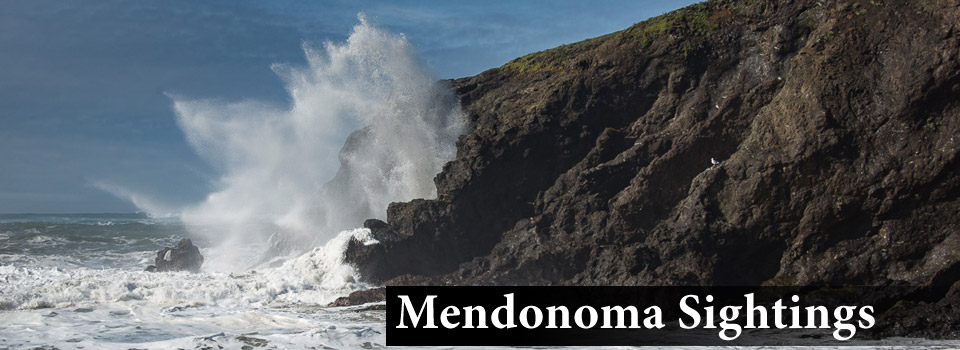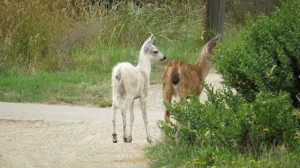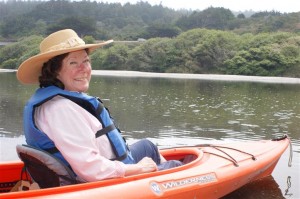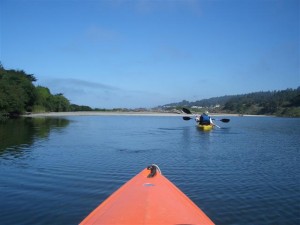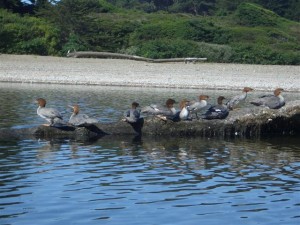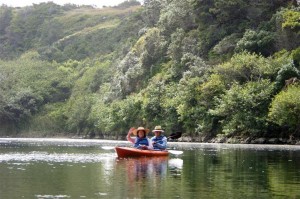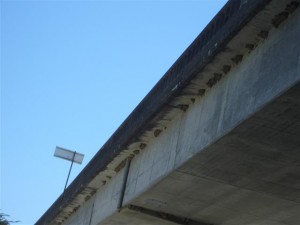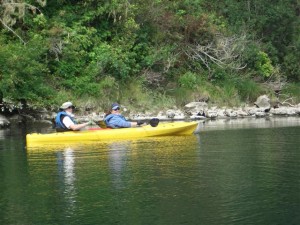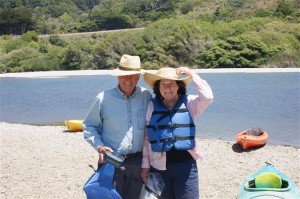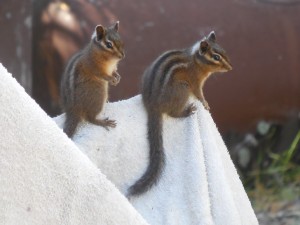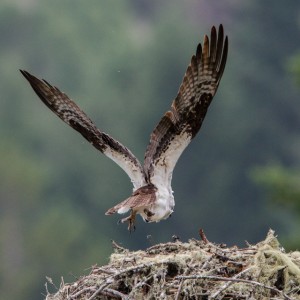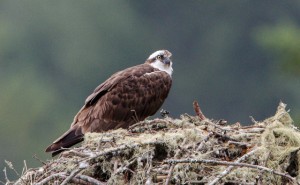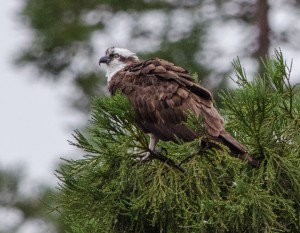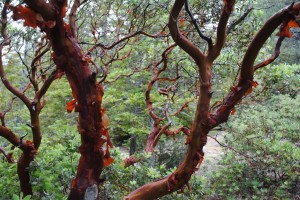On Saturday Rick and I finally kayaked the Gualala River, courtesy of Adventure Rents. They donated this trip to a popular fundraiser for Gualala Arts, called Art off the Wall. Along with art, there are various adventures. I chose this for my prize. Gualala Supermarket donated four delicious box lunches.
I am in the double kayak, awaiting my adventure, excited but just a little nervous.
We went with George and Rozann Grunig; they are in the yellow kayak. We are exploring the lagoon before heading up river, as advised by Wayne Harris of Adventure Rents. In summer months this river is closed to the ocean by a big sandbar, making kayaking very safe.
We found this group of Common Mergansers sunning themselves on a log.
We saw two River Otters. Rozann got a great photo, which I'll share another day. Can you spot the River Otter looking at me on the muddy riverbank?
Any nervousness is now gone and Rick & I are enjoying our first kayak ride.
Passing under the Gualala River Bridge unveiled over a hundred Swallow nests.
George and Rozann, more experienced than us, led the way. In two places we did have to get out and walk, as the river is low in spots. We had a dry winter/spring, which accounts for the lower levels. Jan Harris, of Adventure Rents, said, "Embrace your inner child" on the portages. We did and had fun doing it.
And here Rick and I are, four hours later, happy with our day on the beautiful Gualala River.
Thanks to Rozann for allowing me to share her photos with you here, along with several I took.
To learn more about the river, visit Friends of the Gualala River at: http://gualalariver.org/
To see many beautiful photos of the river and to learn about kayaking, here's the website for Adventure Rents: http://www.adventurerents.com/
Also, I highly recommend the box lunches Surf Super is putting together. You can order your own custom design at http://surfsuper.com/Home.html
